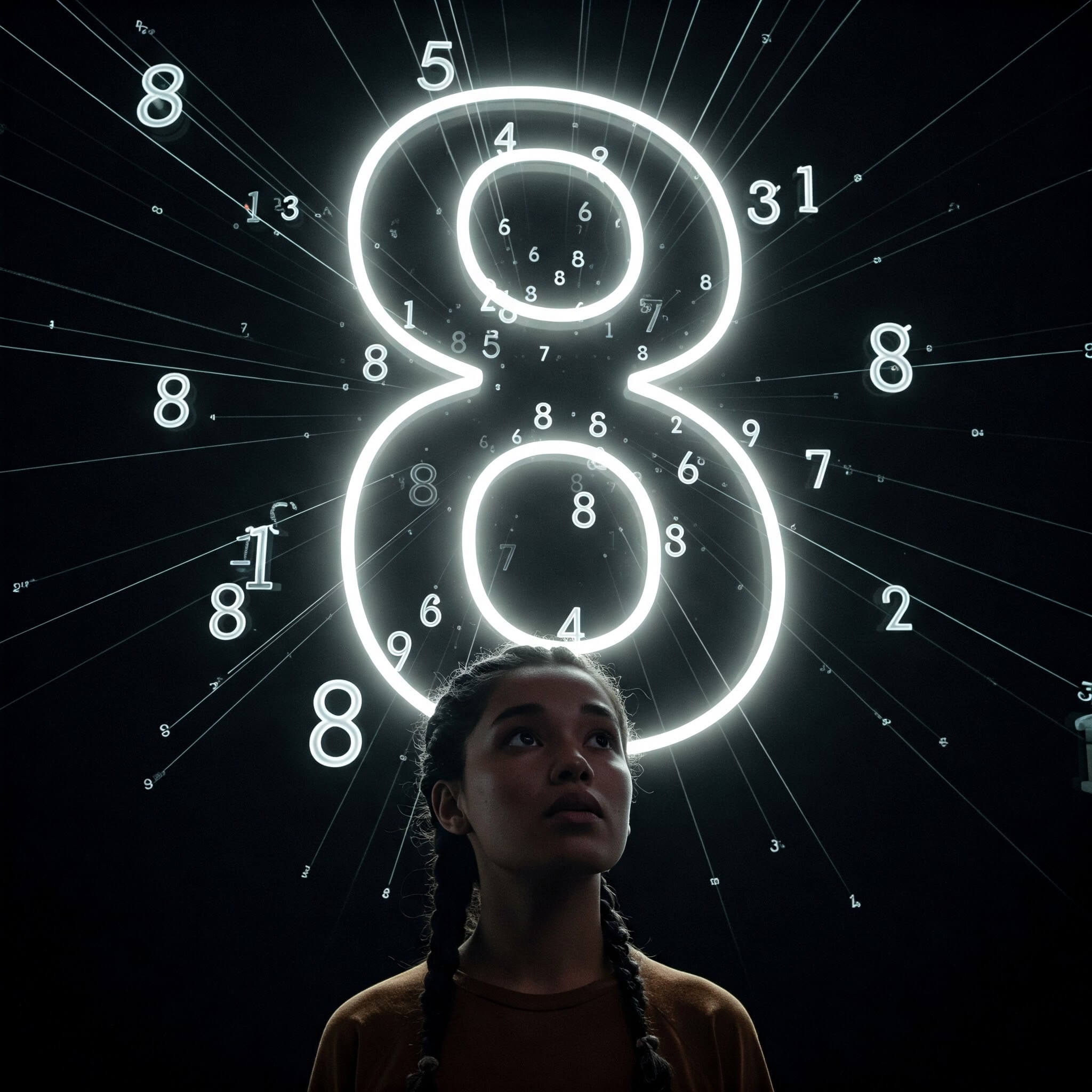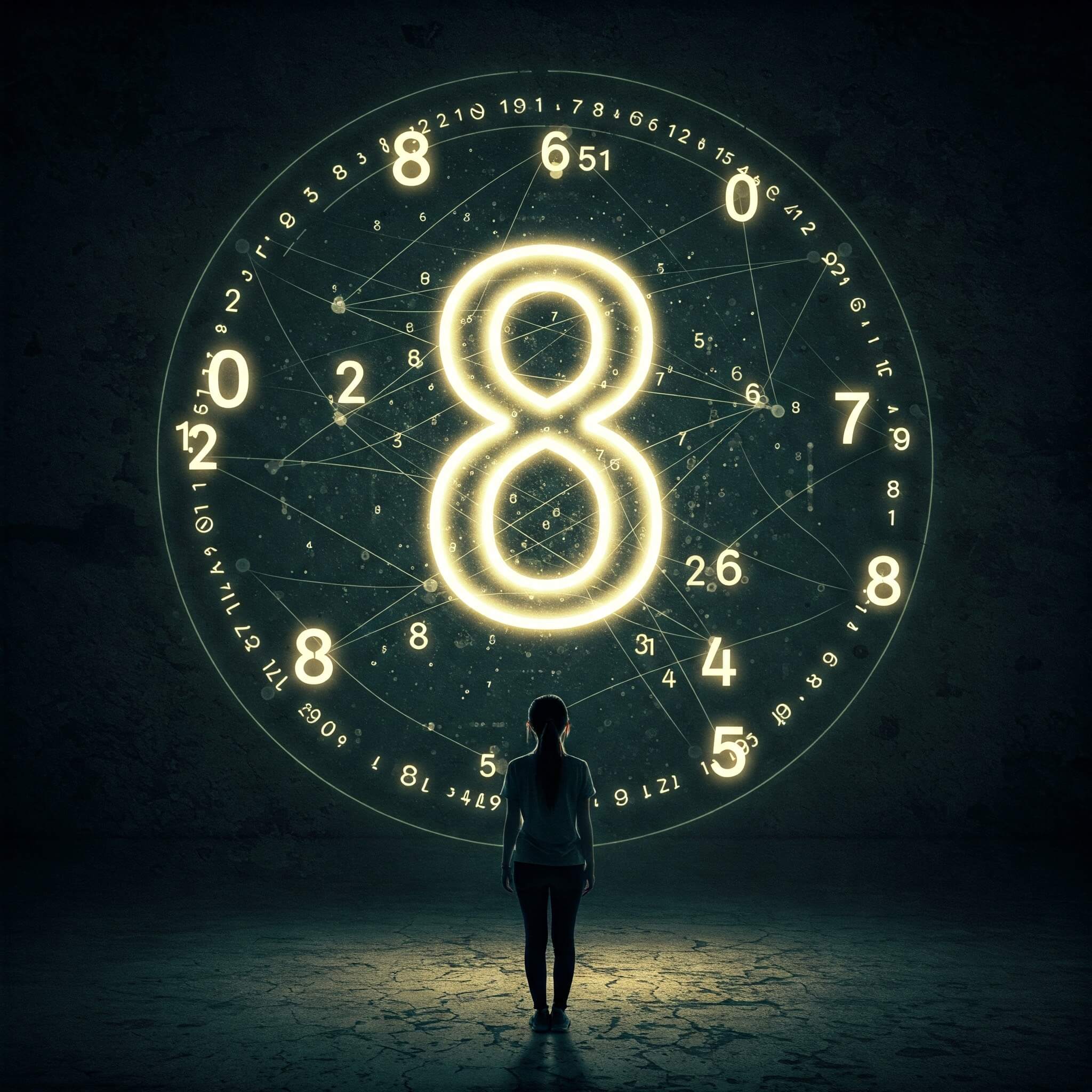
What is Numerology? Unlocking the Secrets in Numbers
Have you ever felt drawn to specific numbers, perhaps a lucky number or a date that holds special meaning? Numerology is the belief that numbers possess more than just mathematical value; they carry unique vibrations and mystical meanings that can influence our lives and personalities. It explores the idea that the universe operates on numerical patterns, suggesting a divine or mystical relationship between numbers and life events. At its heart, numerology assumes that events aren’t random but are guided by the inherent properties of numbers.
Similar to astrology, which looks to celestial bodies, numerology uses numbers derived mainly from your birth date and full birth name to offer insights. It provides a symbolic language based on numbers to explore personal traits, life purpose, strengths, and challenges. We already assign meaning to numbers daily – birthdays, anniversaries, lucky numbers. Numerology expands on this, offering a structured system for self-discovery.
The core belief is that numbers 1 through 9, plus special “Master Numbers,” each have a unique energy or “vibration.” This vibration metaphorically describes a number’s essence, connecting it to letters, names, dates, and ultimately, to an individual’s life. This framework suggests life events follow a numerically defined pattern, offering a sense of order that appeals to our human desire to find meaning.
This guide offers a simple introduction to numerology. We’ll touch upon its history, core beliefs, how to calculate key numbers, their meanings, practical uses, and the scientific perspective.
Unearthing the Roots - A Brief History of Numerology
The fascination with numbers’ symbolic meanings is ancient, predating the term “numerology.” Civilizations in Babylon, Egypt, Greece, China, and India explored the mystical significance of numbers, believing they held cosmic importance. Early practices like gematria (assigning numerical values to letters to find hidden meanings) existed in antiquity.
The figure most often credited as the founder of modern Western numerology is the Greek philosopher Pythagoras (6th century BCE). He and his followers believed numbers were the ultimate reality, explaining the universe’s nature. They assigned specific meanings to numbers (e.g., 1 = unity, 2 = duality, 10 = perfection) and explored numerical relationships in nature, like musical harmony. However, historical details about Pythagoras are debated, as he left no writings, and some attribute his fame more to mysticism than pure mathematics. Still, the “Pythagorean Numerology” name links the practice to this influential figure.
Numerology evolved through various philosophical and mystical traditions, including Neoplatonism, early Christian mysticism, Islamic mysticism, and Jewish Kabbalah. While different systems exist, like the Chaldean (using numbers 1-8, based on letter ‘vibrations’) and Kabbalah (based on the Hebrew alphabet), this guide focuses on the widely used Pythagorean system.
The Core Belief - Numbers, Vibrations, and Your Life
 Numerology’s central idea is that numbers are conduits of specific energies or “vibrations” that influence our personalities, life paths, purpose, strengths, and weaknesses. It suggests everything is interconnected through numerical patterns, meaning nothing is purely coincidental. Individuals are thought to resonate with their key numerological numbers, derived primarily from their full birth date and complete birth name. The birth name is considered particularly significant, carrying a foundational vibrational signature.
Numerology’s central idea is that numbers are conduits of specific energies or “vibrations” that influence our personalities, life paths, purpose, strengths, and weaknesses. It suggests everything is interconnected through numerical patterns, meaning nothing is purely coincidental. Individuals are thought to resonate with their key numerological numbers, derived primarily from their full birth date and complete birth name. The birth name is considered particularly significant, carrying a foundational vibrational signature.
Exploring these numbers aims to unlock self-awareness and personal insight. Understanding the energies encoded in one’s numbers is believed to help individuals comprehend talents, navigate challenges, understand motivations, and make informed choices. Numerology is presented as a personal map for life’s journey. This creates a dynamic between fate (fixed birth data) and free will (using insights for guidance and choice). While core energies might be set, awareness allows for conscious navigation.
Calculating Your Key Numerology Numbers - A Step-by-Step Guide
A numerology chart uses several “Core Numbers,” each revealing different facets of life. The five main ones are:
- Life Path
- Expression (Destiny)
- Soul Urge (Heart’s Desire)
- Personality
- Birthday Numbers
Calculations involve simple addition, reducing multi-digit numbers to a single digit (1-9) by summing the digits (e.g., 28 -> 2 + 8 = 10 -> 1 + 0 = 1). An exception is made for “Master Numbers” (11, 22, sometimes 33) when they appear as the final result before the last reduction step; they are often kept intact.
Your Life Path Number: The Blueprint of Your Journey
Significance: Considered the most crucial number, derived from your full birth date. It represents your main life path, purpose, talents, lessons, opportunities, and challenges. It’s like a blueprint for your life’s journey. Calculation Method (Reduce Components First): Reduce Month, Day, and Year separately to single digits or Master Numbers, then add these results. This method helps reveal significant underlying numbers.
- Reduce Month: Convert to a single digit (Nov = 11 is kept).
- Reduce Day: Reduce to a single digit (11th or 22nd is kept).
- Reduce Year: Add year digits, reduce sum to a single digit or Master Number (11, 22, 33).
- Add Results: Sum the reduced Month, Day, and Year.
- Final Reduction: Reduce the total sum to a single digit (1-9). Exception: If this sum is 11, 22, or 33, keep it as the Master Number.
Example: August 12, 1990
- Month: 8
- Day: 12 -> 1 + 2 = 3
- Year: 1990 -> 1 + 9 + 9 + 0 = 19 -> 1 + 9 = 10 -> 1 + 0 = 1
- Add: 8 + 3 + 1 = 12
- Reduce: 1 + 2 = 3. Life Path = 3
Your Expression (Destiny) Number: Unveiling Talents and Potential
Significance: Derived from your full birth name. Reveals inherent talents, abilities, potential strengths, and shortcomings. Represents your life’s orientation and how you express yourself.
Calculation Method: Use the Pythagorean letter-to-number chart to convert letters in your full birth name (as on birth certificate) to numbers.
- Assign Numbers: Use the chart below.
- Sum Each Name Part: Add letter values for the first name, reduce to a single digit/Master Number. Repeat for middle and last names.
- Add Results: Sum the reduced numbers for each name part.
- Final Reduction: Reduce the total sum to a single digit (1-9). Exception: Keep 11, 22, or 33 if they are the sum.
Pythagorean Letter-to-Number Chart:
| 1 | 2 | 3 | 4 | 5 | 6 | 7 | 8 | 9 |
|---|---|---|---|---|---|---|---|---|
| A | B | C | D | E | F | G | H | I |
| J | K | L | M | N | O | P | Q | R |
| S | T | U | V | W | X | Y | Z |
Example: Emily Ann Brown
- Emily: 5 + 4 + 9 + 3 + 7 = 28 -> 1
- Ann: 1 + 5 + 5 = 11 (Keep)
- Brown: 2 + 9 + 6 + 5 + 5 = 27 -> 9
- Add: 1 + 11 + 9 = 21
- Reduce: 2 + 1 = 3. Expression = 3
Your Soul Urge (Heart’s Desire) Number: Listening to Inner Motivations
Significance: Calculated from the vowels in your full birth name. Reveals deep motivations, inner desires, what brings happiness, and underlying intentions. Represents the “inner you.”
Calculation Method:
- Identify Vowels: List vowels (A, E, I, O, U) in full birth name. ‘Y’ is sometimes a vowel if it sounds like one (e.g., Emily).
- Assign Vowel Numbers: A = 1, E = 5, I = 9, O = 6, U = 3, (Y = 7 if vowel).
- Sum Each Name Part: Add vowel values for the first name, reduce to a single digit/Master Number. Repeat for middle and last names.
- Add Results: Sum the reduced numbers for vowels in each name part.
- Final Reduction: Reduce the total sum to a single digit (1-9). Exception: Keep 11, 22, or 33.
Example: Emily Ann Brown (Y as vowel)
- Emily: E(5) + I(9) + Y(7) = 21 -> 3
- Ann: A(1) = 1
- Brown: O(6) = 6
- Add: 3 + 1 + 6 = 10
- Reduce: 1 + 0 = 1. Soul Urge = 1
Your Personality Number: How the World Sees You
Significance: Calculated from the consonants in your full birth name. Reflects your outer persona, the first impression you make, and how others perceive you. Contrasts with the inner Soul Urge.
Calculation Method:
- Identify Consonants: List all letters except vowels (A, E, I, O, U) in full birth name. Treat ‘Y’ as consonant if not used as vowel.
- Assign Consonant Numbers: Use Pythagorean chart.
- Sum Each Name Part: Add consonant values for first name, reduce to single digit/Master Number. Repeat for middle and last names.
- Add Results: Sum the reduced numbers for consonants in each name part.
- Final Reduction: Reduce total sum to single digit (1-9). Exception: Keep 11, 22, or 33.
Example: Frank Doe
- Frank: F(6) + R(9) + N(5) + K(2) = 22 (Keep)
- Doe: D(4) = 4
- Add: 22 + 4 = 26
- Reduce: 2+6 = 8. Personality = 8
Your Birthday Number: A Special Talent
Significance: Derived simply from the day of the month you were born. Highlights a specific innate talent or gift. Adds a distinct flavor to your personality. Calculation Method:
- Identify Day: Take the birth day (1-31).
- Reduce: If double-digit, add digits to get single digit (1-9). Exception: If sum reduces to 11 or 22 (from 11th, 29th, 22nd), keep it.
Examples: Born 7th: Birthday = 7 Born 15th: 1+5 = 6. Birthday = 6 Born 29th: 2+9 = 11. Birthday = 11
Decoding the Digits - Meanings of the Numbers (1-9)
 Each single digit (1-9) represents an archetype with distinct traits, strengths, and challenges. These apply to any core number but are often emphasized for the Life Path. Remember, each number has positive and challenging expressions.
Each single digit (1-9) represents an archetype with distinct traits, strengths, and challenges. These apply to any core number but are often emphasized for the Life Path. Remember, each number has positive and challenging expressions.
- The Leader: Independent, innovative, ambitious, courageous. Challenges: Bossy, impatient, egoistic.
- The Diplomat: Cooperative, sensitive, intuitive, patient. Challenges: Indecisive, over-sensitive, dependent.
- The Communicator: Creative, expressive, optimistic, social. Challenges: Scattered, superficial, lacks discipline.
- The Builder: Stable, practical, disciplined, reliable. Challenges: Rigid, stubborn, workaholic.
- The Adventurer: Freedom-loving, versatile, adaptable, curious. Challenges: Restless, inconsistent, impulsive.
- The Nurturer: Responsible, compassionate, family-oriented, harmonious. Challenges: Self-sacrificing, meddling, controlling.
- The Seeker: Introspective, analytical, spiritual, wise. Challenges: Withdrawn, skeptical, emotionally distant.
- The Powerhouse: Ambitious, authoritative, successful, disciplined. Challenges: Materialistic, controlling, impatient.
- The Humanitarian: Compassionate, generous, idealistic, wise. Challenges: Overly emotional, burdened, impractical.
The Power Numbers - Understanding Master Numbers (11, 22, 33)
Master Numbers (11, 22, 33) are special double-digit numbers not usually reduced further when appearing as a final calculation result. They carry a “higher vibration,” signifying increased potential for achievement and impact, but also greater challenges and responsibility. They represent a “higher octave” of their single-digit roots (11 of 2, 22 of 4, 33 of 6), adding complexity and spiritual potential. Individuals often integrate qualities of both the Master Number and its root.
- 11: The Intuitive / Inspirer: Keywords: Intuition, illumination, spiritual insight, sensitivity, charisma. Represents heightened intuition and inspiration. Combines 2’s sensitivity with leadership. Challenges: Nervous tension, anxiety, impracticality.
- 22: The Master Builder: Keywords: Visionary, practical, manifestation, large-scale achievement, discipline. Ability to turn grand visions into reality. Combines 11’s idealism with 4’s practicality. Challenges: Pressure, fear of failure, rigidity.
- 33: The Master Teacher: Keywords: Compassion, healing, teaching, guidance, service. Highest level of spiritual service and compassionate leadership. Combines 6’s responsibility with amplified creativity and intuition. Challenges: Over-giving, burnout, high standards, boundary issues.
Living a Master Number path requires conscious effort to harness potential while navigating challenges.
Numerology in Practice - Applying the Insights
Numerology is often used practically for self-understanding, relationships, career choices, and decision-making, based on the idea of aligning actions with one’s core numbers for greater harmony.
- Self-Insight & Growth: Understanding traits associated with core numbers fosters self-awareness, helping leverage strengths and address weaknesses.
- Relationships: Comparing core numbers (especially Life Path) is used to analyze compatibility, understand dynamics, and improve communication between partners, friends, or family.
- Career & Business: Used to guide career choices by matching number traits to professions (e.g., 1s in leadership, 3s in creative fields, 8s in business). Sometimes used for choosing business names or timing.
- Decision Making & Timing: Can offer a framework for significant life decisions. Some systems use personal year/month/day cycles to identify favorable timing.
- Other Uses: Selecting names for children/businesses, interpreting recurring “angel numbers” (e.g., 111).
Numerology acts as a bridge between self-help and divination, offering tools for insight alongside mystical beliefs about destiny and patterns.
A Critical Lens - Numerology and Science

Numerology is widely classified as a pseudoscience by the scientific community. This means it’s presented as scientific but lacks adherence to scientific methods like empirical evidence, testability, falsifiability, peer review, and replicability.
Key criticisms include:
- Lack of Empirical Evidence: Scientific studies have consistently failed to find credible evidence supporting numerology’s claims that numbers predict personality or life events better than chance.
- Arbitrary Systems: Numerology relies on culturally specific constructs like the Latin alphabet, base-10 system, and Gregorian calendar. Different systems (Pythagorean vs. Chaldean) yield different results.
- Inconsistent Calculations: Lack of standardization in calculation methods adds subjectivity.
- No Plausible Mechanism: No scientifically viable explanation exists for how abstract numbers could causally influence lives. “Vibrations” remain metaphorical.
Psychological factors often explain why numerology feels accurate:
- Confirmation Bias: Noticing confirming evidence while ignoring contradictions.
- Barnum Effect: Accepting vague, generalized descriptions as uniquely personal.
- Pattern Recognition (Apophenia): Finding significance in coincidental patterns.
Numerology lacks falsifiability; its vague claims are hard to disprove definitively, a key difference from science. While potentially valuable for self-reflection, presenting it with scientific certainty is misleading and lacks validation.
Conclusion - Your Numerical Journey
Numerology offers a system linking numbers, symbolism, and personal meaning, suggesting that numbers from our birth date and name reveal insights into our personality, purpose, and life path. Calculating core numbers and understanding their meanings, including Master Numbers, provides frameworks for exploring potential and experiences.
Many find practical value in numerology for self-discovery, relationships, career guidance, and decision-making, seeking comfort or a sense of order. However, it’s crucial to recognize its classification as a pseudoscience, lacking empirical support and relying on subjective interpretations and arbitrary systems. Psychological effects like confirmation bias and the Barnum effect contribute to its perceived accuracy.
Exploring numerology can be an engaging part of self-awareness. The key is to approach it with curiosity and critical thinking, distinguishing personal resonance from objective fact, and using any insights gained to empower personal choice and responsibility.
